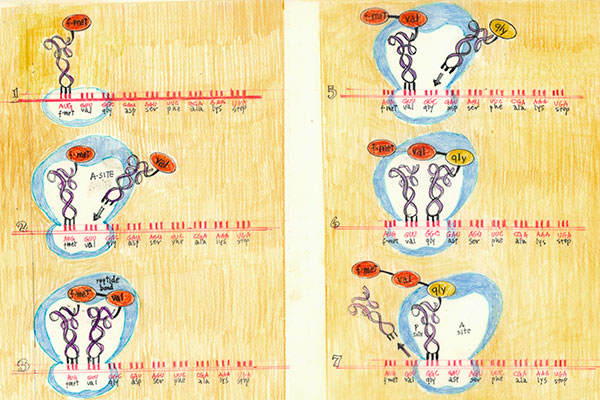The process of gene expression is, at its core, universal. But different organisms use different methods to carry out the “DNA makes RNA and RNA makes protein” recipe. For example, the signals used to recruit ribosomes and start protein synthesis in bacteria are not the same signals used by eukaryotes. Yet much of the structure and function of the ribosome, the molecular machine that translates RNA into proteins, is conserved in both types of organisms. This made HHMI Early Career Scientist Jeffrey Kieft at the University of Colorado Denver wonder if a universal start signal existed that could be recognized by both eukaryotic and prokaryotic ribosomes.
A structured region of an RNA molecule dubbed an internal ribosome entry site (IRES), which is used by some viruses to initiate translation in eukaryotes, fit the bill. Taking a close look at the molecule, Kieft’s team discovered that it could also initiate protein synthesis in prokaryotes. This particular IRES, it turns out, binds both bacterial and eukaryotic ribosomes in a similar structure-dependent manner, but the bacterial interaction appears transient and weaker.
The findings, published March 5, 2015, in Nature, suggest there might be other naturally occurring structured RNAs that can initiate bacterial protein synthesis. One of Kieft’s next steps will be to determine if other such structures do indeed exist, and, if so, what they mean in terms of evolution and gene regulation.







